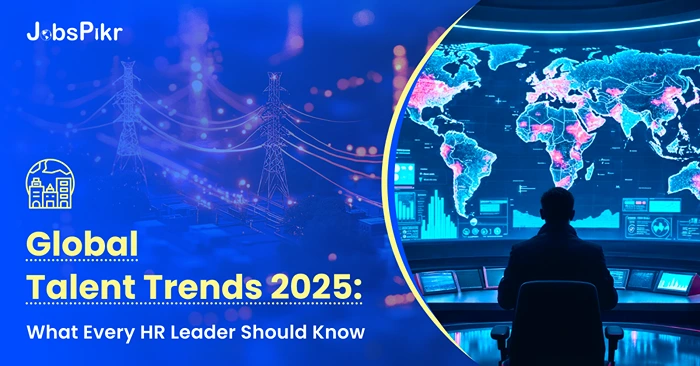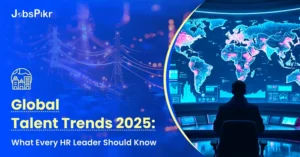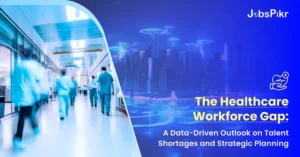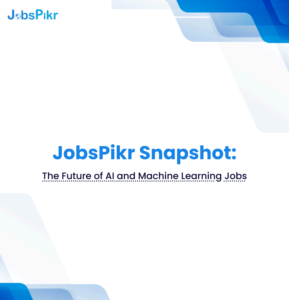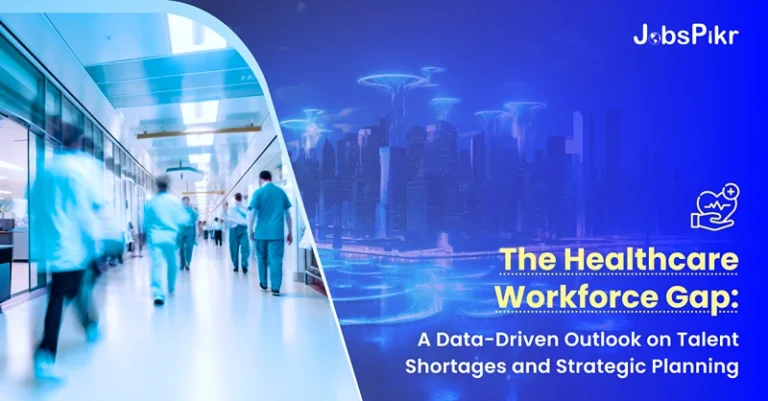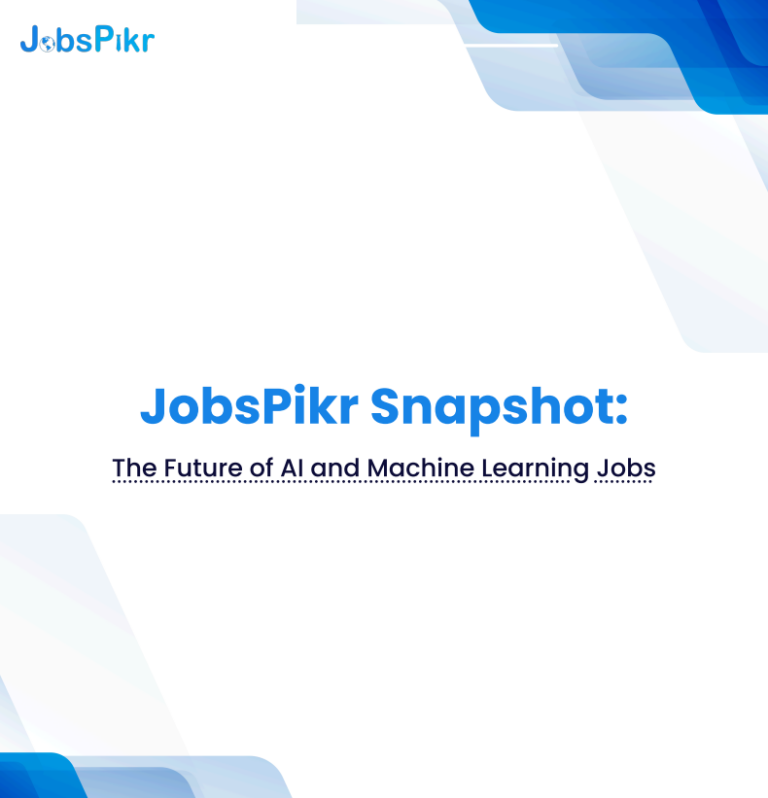The global talent landscape is transforming at an unprecedented pace, shaped by technological disruption, shifting demographics, and evolving employee expectations. HR leaders are no longer required to be just hiring managers—they are strategic architects tasked with future-proofing their organizations. By 2025, the workforce will face a dual reality: a projected displacement of 85 million jobs due to automation, alongside the creation of 97 million new roles demanding expertise in AI, sustainability, and emotional intelligence (World Economic Forum, Future of Jobs Report, 2023).
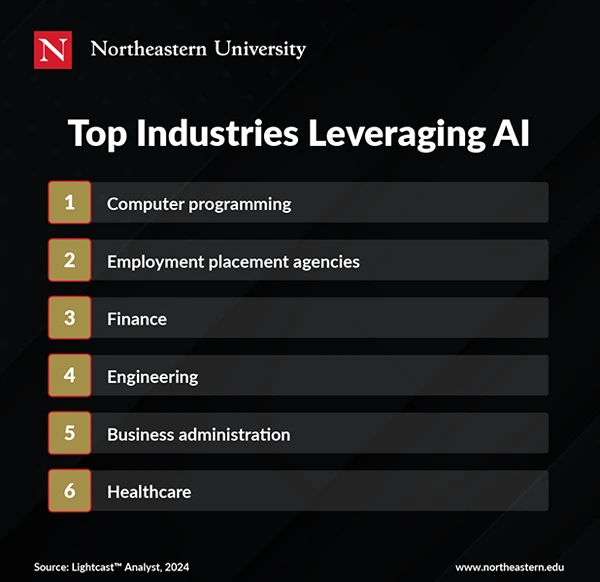
To navigate this turbulence, HR teams must adopt data-driven strategies, prioritize agility, and address regional disparities in talent supply.
This report synthesizes insights from industry leaders, government agencies, and workforce analytics platforms like JobsPikr to provide actionable guidance for 2025 and beyond.
Key Global Talent Trends Reshaping the Workforce
The Hybrid Work Revolution
Hybrid work is no longer a pandemic-era experiment but a permanent fixture. A 2023 Gartner survey found that 39% of global knowledge workers will work in a hybrid environment, up from 37% in 2022. However, this shift has unintended consequences.
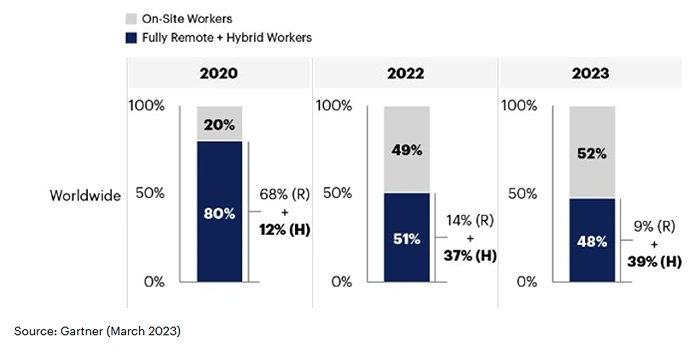
Proximity bias—where in-office employees receive preferential treatment—threatens equity. Companies like Salesforce have countered this by redesigning performance reviews to focus on outcomes, not physical presence, and investing in tools like virtual whiteboards to level the playing field.
AI and Automation: Job Disruption Meets Opportunity
AI adoption is accelerating at a 35% annual growth rate, per McKinsey’s 2024 Global AI Survey. While roles like data entry clerks and administrative assistants face obsolescence, demand is surging for AI ethicists (to mitigate algorithmic bias) and human-machine collaboration managers (to optimize workflows).
For example, Siemens retrained 12,000 employees in AI and IoT skills through its Digital Industries Academy, reducing hiring costs by 20% (Siemens AG, 2023).
Demographic Shifts: A Multigenerational Workforce
By 2025, Gen Z will constitute 27% of the workforce, according to a ManpowerGroup report, bringing demands for purpose-driven work and digital-first collaboration. Meanwhile, aging populations in Japan and Germany are straining labor markets.
Japan’s workforce is projected to shrink by 12% by 2040 (National Institute of Population and Social Security Research, 2023), prompting companies like Toyota to introduce phased retirement programs and AI-powered exoskeletons to support older workers.
Skills Over Degrees: The Rise of Micro-Credentials
Traditional credentials are losing ground to skill-based hiring. LinkedIn’s 2023 Workplace Learning Report revealed that 76% of HR leaders prioritize skills over degrees, with job postings emphasizing competencies like blockchain development (+40% YoY) and carbon accounting (+65% YoY).
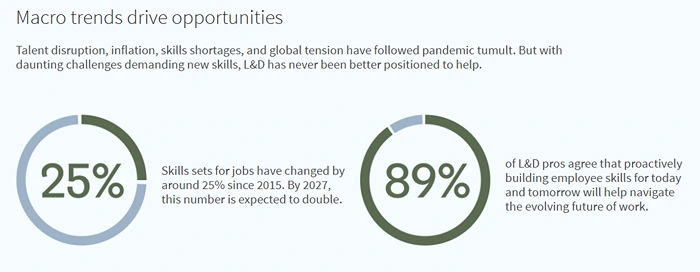
Platforms like Coursera and JobsPikr are enabling this shift: JobsPikr’s data shows a 33% increase in job postings for roles requiring nano-degrees in cybersecurity and UX design since 2022.
Employee Well-Being: From Perk to Priority
Burnout costs the global economy $1.2 trillion annually in lost productivity (World Health Organization, 2023). Companies are responding by embedding well-being into corporate strategy. Microsoft, for instance, mandates “Wellness Wednesdays” with no meetings, while Unilever’s Mental Health Allies program trains employees to support colleagues in crisis.
Regional Talent Dynamics: A Data-Driven Breakdown of the Global Talent Trends
- North America: The Tech Talent Crunch
- The U.S. faces a shortage of 1.2 million tech workers by 2025 (CompTIA, 2023 Workforce Trends Report).
- JobsPikr data highlights Austin and Raleigh as emerging hubs, with a 28% YoY increase in AI engineering job postings.
- Diversity gaps persist: Only 18% of tech executives are women (Deloitte, 2023).
- Europe: Green Skills in Demand
- The EU’s Green Deal will create 2 million jobs in renewable energy by 2025 (European Commission, 2023 Employment Outlook).
- Germany’s aging workforce could shrink by 4 million by 2030, driving reliance on automation (Federal Statistical Office of Germany, 2023).
- Asia-Pacific: Youth Potential vs. Skills Mismatch
- India produces 1.5 million STEM graduates annually but faces a 30% employability gap (NASSCOM, 2023).
- JobsPikr’s tech giants report shows a spike in skills for computer science, Microsoft Azure, and Cloud computing, yet not many people in the workforce are skilled enough for these jobs.

- Africa: Harnessing the Youth Dividend
- 60% of Africa’s population is under 25 (African Development Bank, 2023), but only 5% have formal vocational training.
- Remote work initiatives like Andela’s Tech Talent Accelerator are connecting African developers to global firms, reducing brain drain.
- Latin America: Startup Boom Meets Informal Labor
- Brazil’s tech sector attracted $8 billion in venture capital in 2023 (LAVCA, 2023), yet 53% of workers remain in informal roles (ILO, 2023).
Workforce Analytics: Predictive Tools for Strategic HR
Data platforms like JobsPikr are revolutionizing talent strategy by offering real-time insights into global talent trends and labor markets. For example:
- JobsPikr’s 2024 Global Talent Demand Index shows a 45% YoY increase in job postings for AI ethics specialists in North America and Europe.

- Predictive attrition models, powered by JobsPikr’s analytics, helped a Fortune 500 healthcare firm reduce turnover by 18% by identifying at-risk employees six months in advance.
Case Study: A European automaker used JobsPikr’s geo-targeted labor data to relocate its EV battery R&D center to Poland, accessing a pool of 8,000 underutilized engineers and cutting recruitment costs by 35%.
Actionable Strategies for HR Leaders
- Build a Skills-Obsessed Culture
- Partner with platforms like Degreed to create personalized learning paths.
- Use JobsPikr’s Skill Gap Analyzer to identify emerging competencies (e.g., quantum computing).
- Leverage Contingent Labor
- 40% of the workforce will be freelancers by 2025 (Upwork, 2023). Platforms like Toptal and JobsPikr’s Gig Talent Tracker help manage this shift.
- Amplify ESG Commitments
- 64% of millennials prefer employers with strong ESG policies (McKinsey, 2023). Showcase initiatives like Microsoft’s Climate Career Hub in recruitment campaigns.
- Adopt Agile Performance Management
- Replace annual reviews with tools like Lattice for continuous feedback.
- Measure KPIs like innovation (e.g., patents filed) and collaboration (e.g., cross-team projects).
Leading with Agility in 2025 with Global Talent Trends
The talent landscape of 2025 demands a paradigm shift. HR leaders must act as futurists, leveraging tools like JobsPikr to anticipate skill shortages, diversify talent pipelines, and foster cultures of continuous learning. By embracing data-driven strategies, organizations can turn disruption into opportunity.

Stay ahead of the curve with real-time workforce insights. Explore JobsPikr’s platform today to understand global talent trends and transform your people strategy.
Sign up for a free trial today.
